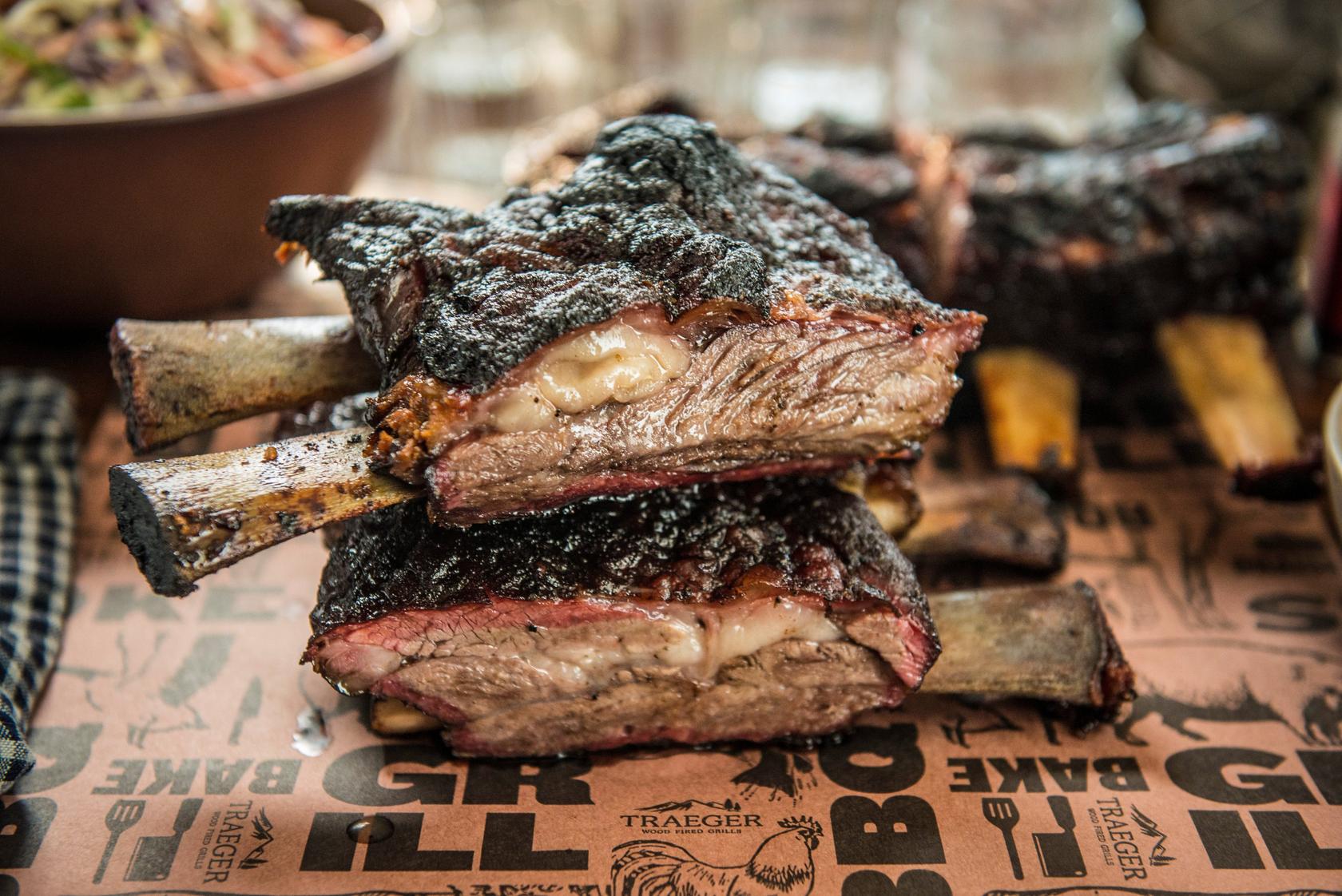
Dry-aged beef is a premium menu item at the world's best steak restaurants. But it's not some exclusive, secret process. Here are the surprisingly simple facts about dry-aged beef.
What Is Dry-Aged Beef?
Dry-aged beef is beef that is unpacked and refrigerated for up to 60 days so it develops deeper, more savory flavors than wet-aged beef.
Wet-Aged vs. Dry-Aged Beef
Most of the beef you buy at supermarkets is wet-aged beef. The beef is butchered into individual cuts, then wrapped in plastic to lock in moisture and prevent contamination.
The plastic keeps enzymes and bacteria away, but at a cost. The chemical reactions that improve the flavor of dry-aged beef don't take place with wet-aged beef.
Wet aging is a relatively new process. Until about 50 years ago, all beef was dry-aged. Dry aging is the only aging method that develops deeper, more intense flavors in the beef before cooking it.
What Does Dry-Aged Beef Taste Like?
Beefy, cheesy, nutty, deep, complex, and pungent are some of the words people use to describe the flavor of dry-aged beef. The flavor changes are caused by the breakdown of muscle fibers and by enzymes working their way into the meat, creating more intense flavors.
The longer the beef is aged, the more intense the flavors get. Most people find that beef aged for longer than 60 days is too strong for their taste. But everyone's taste is different.
What's the Texture of Dry-Aged Beef?
Dry-aged beef is more tender than beef that has not been aged. Dry-aged beef can be significantly juicier than non-aged beef, and the juices themselves are tastier.
The texture of the meat will depend on how it is cooked. For maximum tenderness and juiciness, avoid overcooking.
What Are the Best Cuts of Beef for Dry Aging?
Prime rib cuts that have a fat cap are the best choice for dry-aged beef. Cuts of prime rib are large, which is important because smaller cuts will dry out before the flavors associated with the aging process develop. The fat cap provides additional protection against moisture loss.
Individual steaks are not good for dry aging. They dry out too quickly for any unique flavor to develop.
How Does the Dry Aging Process Work?
Dry aging is very simple. There is no preparation like salting or seasoning. The raw cut of beef is hung, or placed on a rack, inside a refrigerator or refrigerated room. Then it is left alone for 30 to 60 days.
With a little planning and a few items of special equipment, anyone can dry age beef at home. Learn more about how to dry age beef here.
How Does Dry-Aged Beef Not Spoil?
Dry-aged beef doesn't spoil because it is kept at a temperature below 40 degrees Fahrenheit, and because the dry aging process ends after a maximum of about 60 days. Decades of experimentation have identified these times and temperatures as the ideal zone for flavor development with minimal spoilage.
Dry-aged beef can spoil if kept at higher temperatures, or if aged for longer periods of time.
How to Tell if Dry-Aged Beef Has Gone Bad
Your nose will tell you if your dry-aged beef has spoiled. Rotten beef smells very bad.
The surface of dry-aged beef will often have small areas of mold. This is normal. The mold is sliced away before cooking.
Where Can I Buy Dry-Aged Steak?
Your local butcher may sell dry-aged steak. There are also several reputable meat companies that sell dry-aged steak online.
Why Is Dry-Aged Beef More Expensive?
Dry-aged beef costs more because of the time, space, and energy required for the dry aging process. Steak that is being dry-aged can't be sold, and it must be stored in a special, refrigerated room. The room costs money, and so does the energy needed to keep it cool. Those costs are passed on to the customer.
Why Is Beef the Only Meat That's Dry-Aged?
Because beef comes in very large cuts, it is ideal for dry aging. The process takes at least 15 days to deliver any benefits. Cuts from smaller animals will dry out by that time. Other large cuts can be dry-aged — such as venison — but beef is the one you're most likely to see on restaurant menus or for sale online.
How to Cook a Dry-Aged Steak
Cook a dry-aged steak the same way that you'd cook any tender, expensive high-end cut, such as ribeye. The goal is a crispy sear on the outside, and meat at medium-rare (135 degrees Fahrenheit) on the inside.
Overcooking dry-aged steak will eliminate the tenderness, juiciness, and some of the flavor that results from dry aging.
Dry-Aged Steak Is Even Better on a Traeger
If you do get your hands on a dry-aged steak, or dry-age yourself, you can deliver even more complex flavors with natural wood smoke from a Traeger. By using the reverse sear method, you can smoke the steak to the proper internal temperature, then get the perfect sear before serving. Enjoy!